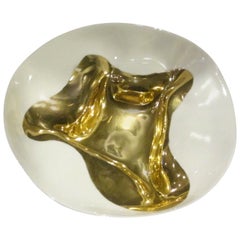Serving Bowls
1970s Danish Scandinavian Modern Vintage Serving Bowls
21st Century and Contemporary Italian Serving Bowls
Gold Leaf
21st Century and Contemporary Italian Serving Bowls
Gold Leaf
1970s Danish Mid-Century Modern Vintage Serving Bowls
Metal, Enamel
21st Century and Contemporary Australian Serving Bowls
Aluminum
1970s Danish Scandinavian Modern Vintage Serving Bowls
Glass
1970s Italian Mid-Century Modern Vintage Serving Bowls
Metal
21st Century and Contemporary Italian Modern Serving Bowls
Aluminum
1970s Italian Vintage Serving Bowls
Blown Glass
21st Century and Contemporary Australian Serving Bowls
Aluminum
21st Century and Contemporary Australian Serving Bowls
Aluminum
21st Century and Contemporary Italian Serving Bowls
Sterling Silver
21st Century and Contemporary European Serving Bowls
Bronze
1970s Danish Scandinavian Modern Vintage Serving Bowls
1970s German Jugendstil Vintage Serving Bowls
Earthenware
1970s Danish Scandinavian Modern Vintage Serving Bowls
1970s Italian Mid-Century Modern Vintage Serving Bowls
Goatskin
1970s American American Craftsman Vintage Serving Bowls
Ash
Early 2000s Italian Serving Bowls
Silver Plate
1970s Danish Scandinavian Modern Vintage Serving Bowls
21st Century and Contemporary Italian Serving Bowls
21st Century and Contemporary Belgian Serving Bowls
Ceramic
21st Century and Contemporary Italian Serving Bowls
Sterling Silver
1970s Italian Mid-Century Modern Vintage Serving Bowls
Murano Glass
1970s Finnish Scandinavian Modern Vintage Serving Bowls
Bronze
Early 2000s Serving Bowls
Stainless Steel
1970s Czech Mid-Century Modern Vintage Serving Bowls
Art Glass
1970s Mid-Century Modern Vintage Serving Bowls
Lucite
1970s Italian Post-Modern Vintage Serving Bowls
Brass
Vintage, New and Antique Serving Bowls
Vintage, new and antique serving bowls are popular with collectors as well as cooks. While some serving bowls are merely decorative items, others are both eye-catching and functional.
The design and material of a bowl will vary depending on the period and location where it was made. Antique Chinese serving bowls are often exquisitely painted and made from fine porcelain. Colonial American wooden bowls are practical and elegant, able to hold brightly colored fruit or act as a serving dish at a family meal.
Along with wood, stone, metal and porcelain, there are also glass serving bowls. The most notable are made from Murano glass, named for the Murano Island in Venice where many of the world’s most famous glass objects have been produced. Glass serving bowls from the 19th through the mid-20th century are especially popular with collectors. Pieces from this era range from simple to ornate, frequently featuring gold or painted embellishments.
The styles of these bowls include art glass, which dates to the mid-19th century, and colorful carnival glass, which was introduced in the early 20th century. Carnival glass serving bowls were more affordable so they were used widely in homes. Depression glass, an iteration of glassware that was inexpensively mass-produced when people didn’t have much money to spend on decor during the 1920s and ’30s, featured bright colors. Milk glass, which had its heyday in the late 19th century, adds a touch of elegance to any table or display.
Antique and vintage serving bowls are desirable for their style, patterns and range of textures they can help introduce to a space. They are also prized for their rich history. Browse antique and vintage serving bowls on 1stDibs today.





